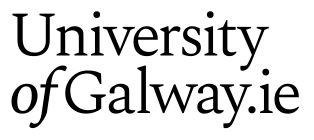
- This event has passed.
Professor Elizabeth Fitzpatrick: Finn mac Cumaill’s Places: Linking Human Settlement with Landscapes of Enriched Natural Resources
March 5, 2015 @ 6:00 pm
Event Navigation
Professor Elizabeth Fitzpatrick
(School of Geography and Archaeology NUI Galway )
Finn mac Cumaill’s Places: Linking Human Settlement with Landscapes of Enriched Natural Resources
Finn mac Cumaill (Finn McCool) and his fÌ_an or warrior band are central figures in the literature and oral tradition of Gaelic-speaking peoples of Ireland, Scotland and the Isle of Man. Finn variously means white, bright, lustrous, fair, enlightened and self-revealed. Tales of Finn have enduring appeal. Prof. Elizabeth FitzPatrick’s project with Dr Ronan Hennessy and Dr Paul Naessens, of NUI Galway, An Atlas of Finn mac Cumaill’s Places, proposes that place-names associated with Finn are not just folk indices of the Finn-Cycle of tales but indicate areas of enriched natural resources and physical boundaries in the landscape.
The project has discovered that Finn’s places have distinctive archaeologies, topographies and wildlife ecologies situated in geological transition zones characterised by unconformities, contacts and faults. As landforms, they are epitomised by bareness and are mostly hills, variously called Seefin (‰Û÷Finn’s seat’), Knockfinn (‰Û÷Finn’s Hill’) and Formoyle (‰Û÷very bare place’), but they are also caves, such as Fingal’s Cave on the Isle of Arran, and causeways like the World Heritage Giant’s Causeway on the Co. Antrim coastline. In the past, Finn‰Û÷s places were important boundary points of territories, hunting grounds for red deer and wild pig, and characterised by mineral enrichment.
Finn’s places on the edge of Western Europe may be the most enduring survival of a wider landscape expression of the Celtic place-name vindo-s and its associated phenomena of boundary zones and areas of enriched natural resources. Notably, it is found in Celtic settlements across Europe that became major Roman frontier forts.

